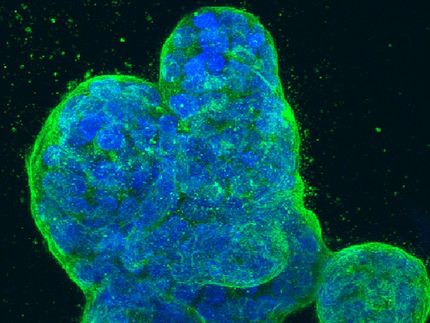Revolutionary therapy slows tumor growth in advanced breast cancer, Penn research reports
New strategy holds promise for fewer patient side effects
A novel therapy designed to attack tumors in patients with a genetic mutation in either BRCA1 or BRCA2, slowed tumor growth in 85 percent of advanced breast cancer patients treated in a small study, researchers report in Lancet .
"That is really an enormous response rate in a population of patients who have received a median of three prior therapies," says study co-author Susan M. Domchek, MD, associate professor of Medicine, University of Pennsylvania School of Medicine, and director of the Cancer Risk Evaluation Program at Penn's Abramson Cancer Center.
"This is the first time that we have been able to take the genetic reason a person has developed cancer and make it a target," Domchek says. "Most of the time we look at what is going on in the tumor itself and then figure out how to target it. But in this situation, the women all had an inherited mutation in either the BRCA1 or BRCA2 gene and we could exploit that weakness in the tumor. It is a strategy that may cause fewer side effects for patients."
The new agent, called olaparib, inhibits a protein called poly(ADP-ribose) polymerase (PARP). Both PARP and the BRCA proteins are involved in DNA repair. And while cells seem to be able to do without one or the other, inhibiting PARP in a tumor that lacks a BRCA gene is too much for the cells, and causes them to die.
"If you put too much stress on the cancer cell, it can't take it and it falls apart," Domchek says. Because the non-tumor cells in a patient with an inherited BRCA mutation still retain one normal copy of the BRCA gene, they are relatively unaffected by PARP inhibition. "These drugs may be very potent in tumor cells and much less toxic in normal cells. That is important from the perspective of cancer treatment," Domchek says.
The international study enrolled 54 patients in two groups. The first group of 27 women received 400 mg oral olaparib twice daily and the second group of 27 patients received 100 mg oral olaparib twice daily. The higher dose appeared to have more activity against the disease, with one patient (4%) having a complete resolution of her tumor and ten (37%) showing substantial tumor shrinkage. Another 12 (44%) women had stable disease or some tumor shrinkage, but not enough to be considered a partial response by standard criteria. In the low dose group, six (22%) patients showed substantial shrinkage and 12 (44%) had some tumor shrinkage or stable disease.
Although the results look good thus far, Domchek says more clinical trials will be necessary before olaparib or other PARP inhibitors in development will be ready for use in regular practice. "It is important for patients to join those clinical trials because we need to determine how best to use these drugs, on their own or in combination with other agents," she said. "And we need to establish definitively that they are better than other drugs."
The PARP inhibitors are a transition in the field of cancer drug development. "This is a different way of looking at cancer therapeutics," Domchek says. "In oncology, this is really one of the first times that we've seen drugs being developed on the basis of inherited susceptibility – and that may open up a whole new avenue of drug development."
Most read news
Topics
Organizations
Other news from the department science

Get the life science industry in your inbox
By submitting this form you agree that LUMITOS AG will send you the newsletter(s) selected above by email. Your data will not be passed on to third parties. Your data will be stored and processed in accordance with our data protection regulations. LUMITOS may contact you by email for the purpose of advertising or market and opinion surveys. You can revoke your consent at any time without giving reasons to LUMITOS AG, Ernst-Augustin-Str. 2, 12489 Berlin, Germany or by e-mail at revoke@lumitos.com with effect for the future. In addition, each email contains a link to unsubscribe from the corresponding newsletter.






















































